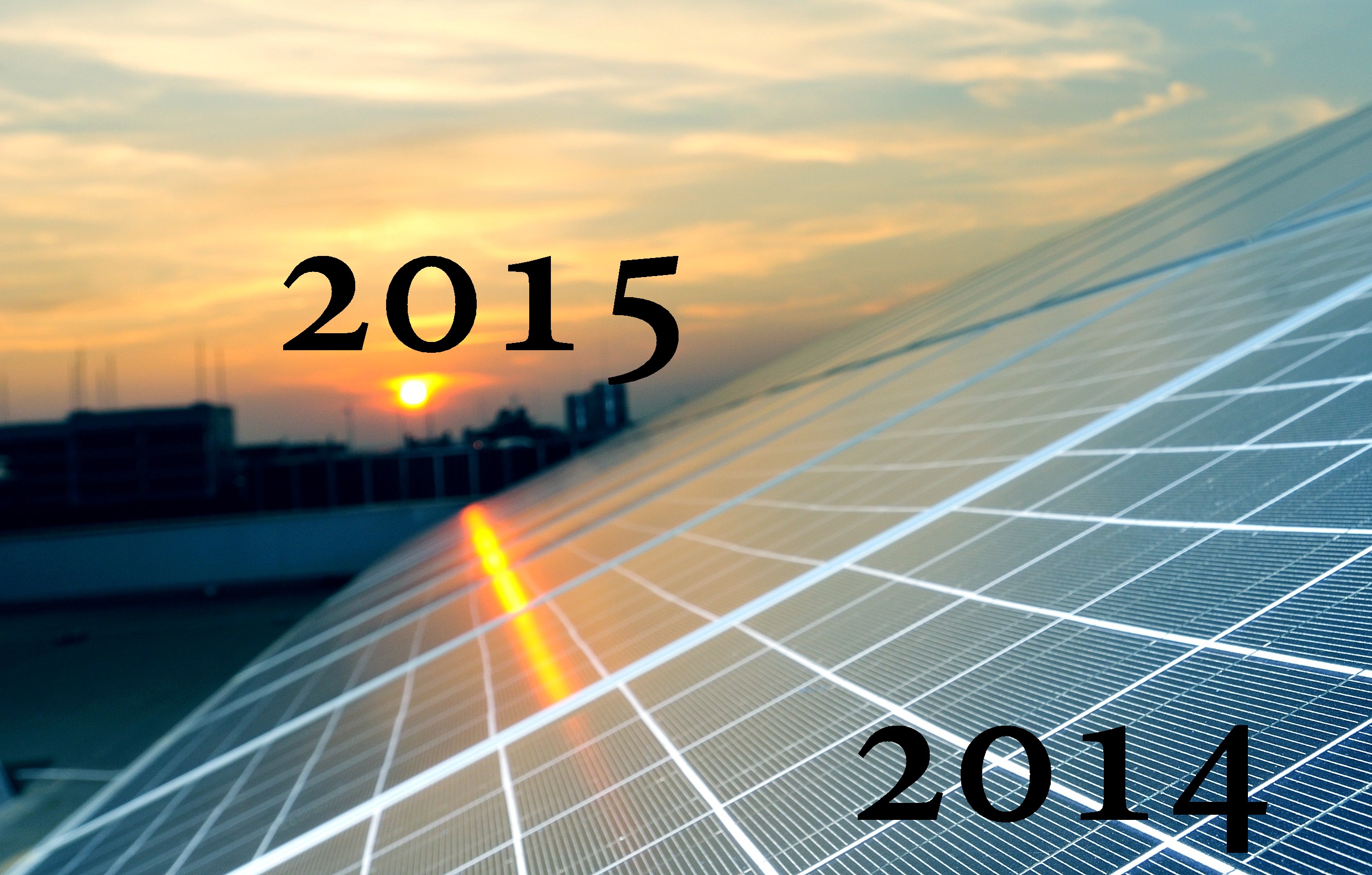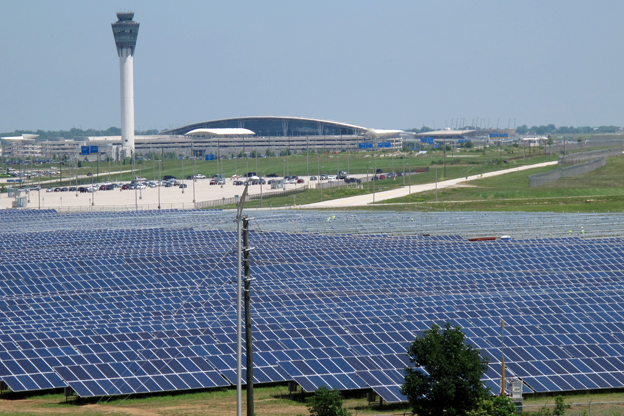As we approach the closing of an eventful 2014 for solar, GreentechLead.com takes a look at the current status of solar industry and the major developments in 2014 which have impacted the industry in a big way.
There has been growing interest in emerging markets towards solar energy. Several governments revealed ambitious goals for the coming years. LATAM and Caribbean committed to raise solar capacity by 9 GW in five years while Nigeria announced plans to install 7.2 GW of renewable energy by 2020. Meanwhile India revised its solar energy target to 100 GW from the earlier target of 20 GW for 2022.
According to Frost & Sullivan, global solar market is estimated to reach $137.02 billion in 2020. From 2014 to 2020, worldwide solar module installations will witness annual additions of around 40 GW, said an estimate from ReportsnReports.com. However, Mercom Capital Group has come up with higher estimate, saying global solar installations is expected to touch 54.5 GW in 2015 despite the uncertainty surrounding the major markets like China and Japan. Despite this, Asia Pacific is expected to contribute a major share (about 46 percent) to world’s solar market in 2014, according to industry reports.
 With all eyes on Japan and China, the leaders in solar energy, Japan is set to displace China as largest solar market in 2014. This happens as China has lost its solar capacity target of 14 GW this year, reports Bloomberg New Energy Finance. Japan is expected to add 10.3 GW to 11.9 GW of solar power in 2014.
With all eyes on Japan and China, the leaders in solar energy, Japan is set to displace China as largest solar market in 2014. This happens as China has lost its solar capacity target of 14 GW this year, reports Bloomberg New Energy Finance. Japan is expected to add 10.3 GW to 11.9 GW of solar power in 2014.
Solar PV installations in the U.S is estimated to reach 6.5 GW in 2014, up 36 percent over 2013 and more than three times the market size of just three years ago, said Solar Energy Industry Association (SEIA). Environment America Research and Policy Center predicted that solar power will constitute 10 percent of America’s energy by 2030.
The rise of solar in Asia also coincided with slowdown in Europe. According to European Photovoltaic Industry Association (EPIA), the world added at least 37 GW of new PV capacity in 2013, but Europe contributed only 28 percent of the total capacity. While slowdown was more visible in Italy and Germany, new developments from countries like France give hopes for 2015. France recently announced a 300 MW solar PV plant in Cestas, which will be the largest ground-mounted PV installation across Europe.
Good news for Europe is that it is ranked No.1 in concentrated solar power (CSP) market in terms of installed capacity. CSP adoption is growing fast with global concentrated solar power market expected to reach 8,674.7 million in 2020, growing at a CAGR of 19.4 percent from 2014 to 2020. Europe accounted for more than 43 percent of the overall market and is expected to grow with a CAGR of 20.2percent from 2014 to 2020.
North America accounted for nearly 31.21percent of CSP market share in 2013 and is expected to grow at a CAGR of 22 percent from 2014 to 2020 while Asia Pacific accounted for nearly 15.08 percent of the market share in 2013 and is expected to grow at a CAGR of 19.5percent from 2014 to 2020.
A major headline that hit solar industry recently was imposing of duties on Chinese solar panels by US. In December, the Commerce Department of U.S. released the final ruling on imposing steep duties on solar products from China and Taiwan. The new ruling, according to U.S., will close the loophole that allowed Chinese manufacturers to circumvent duties imposed in 2012. The department announced anti-dumping duties of 26.71 percent to 78.42 percent on imports of most solar panels made in China, and rates of 11.45 percent to 27.55 percent on imports of solar cells made in Taiwan.
Malaysia, as per industry reports, has benefitted the most from these trade wars. Malaysia has emerged as the world’s third-largest producer of solar equipment, after Europe and China. Compared to the U.S., Malaysia’s solar yield is estimated as three times higher. As Chinese companies have been hit with American tariffs and European quotas, Malaysia has increasingly attracted multinationals. Most factories operating here are entirely owned by American, European, South Korean and Japanese companies, but prefer to talk about operations in their home countries.
Other newsmakers of solar in 2014

Indianapolis International Airport (IND) Solar Farm became fully operational in December 3rd week. The 7.5MW solar farm is the largest airport-based solar farm and is comprised of 32,100 sun-tracking panels, with an efficiency to produce around 31 million kilowatt hours of electric energy annually.
In December, North Carolina Utilities Commission approved $500 million investment by Duke Energy in solar power to produce 278 megawatts of electricity. The utility will build three solar-generating facilities in addition to purchasing power from five plants to meet state’s renewable energy requirement.
In early December, IKEA announced plans to add 40,000 square feet of solar panels atop its Detroit-area store operating in Canton, Michigan. It will be the state’s largest roof-top solar array, according to IKEA authorities.
In November, Yingli Green Energy supplied over 5 MW of solar photovoltaic panels for Bolivia’s first solar power plant. This is considered as Bolvia’s largest solar project and the world’s largest storage-equipped hybrid PV-diesel project. Yingli Green Energy supplied 17,000 PV panels for this project.
Russia is attracting big investments in solar from its allies. In October, Amur Sirius, the power firm from China, announced plans to invest up to 45 billion rubles ($1 billion) in Russian solar energy by next year. Recently Indian business conglomerate Tata, through its energy wing Tata Power, also formed partnership with the state-run Russian Direct Investment Fund (RDIF) to invest a total of $1 billion into various solar/renewable energy projects to be developed across Russia.
In September, GE Energy announced investments in Japan’s largest solar power project, a 231 MW facility, which is coming up in Setouchi City. GE Energy holds a 60 percent share in the project. Other financing partners include Okayama Kuni Umi Asset Management and Toyo Engineering. The project is expected to be commissioned by 2019.
And the winners are………
Trina Solar is forecast to be the largest module supplier for 2014, according to IHS. Trina Solar has also been ranked No. 1 in SVTC’s Solar Scorecard for 3rd straight year.
First Solar was ranked No.1 in 2014 Top Solar Utility Contractors list by Solar Power World with 2887 MW of total installed capacity and 1130 MW in 2013.
Pacific Gas and Electric Company (PG &E) was ranked No.1 utility solar leader with an unbeatable 1471 MW annual installation, according to the Solar Power stats released by Solar Electric Power Association (SEPA).
Canadian Solar’s polysilicon modules achieved the highest PTC ratings amongst all major poly module manufacturers. PTC ratings program is a universally recognized standard for assessing real-world solar panel performance. Canadian Solar’s CS6P-P modules (60 cell poly) with 255 Wp, received a PTC Rating of 91.88 percent, and the CS6X-P modules (72 cell poly) with 305 Wp received a PTC Rating of 91.90 percent.
Rajani Baburajan
editor@greentechlead.com
Disclaimer: The information in this article has been compiled based on the news reports available to GreentechLead.com. This may not be an exhaustive write-up, and GreentechLead.com will not be responsible for omissions, if any.
